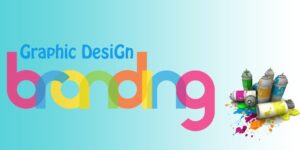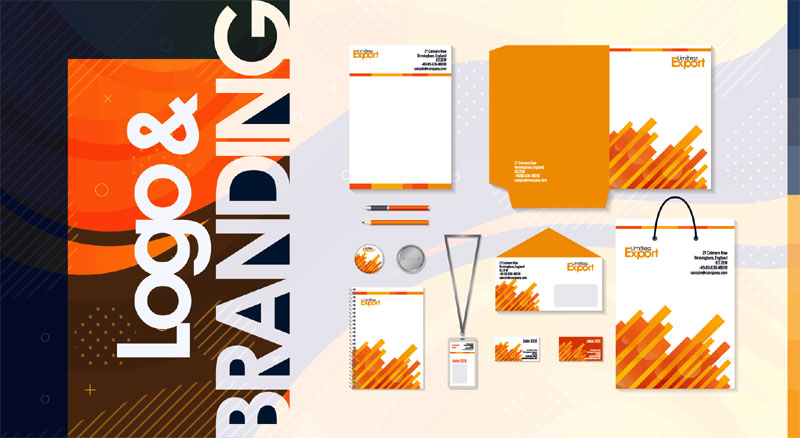When it comes to product purchasing, people always prefer to go for a familiar brand. And in this scenario, it is not that a marketing strategy works best always but there is another side to the coin – brand designing. Yes, the graphic designers play the part here. Every particular product, be it a clothing brand or another one, needs to withstand its competitors and should be easily perceived by the consumers besides attracting new eyes. To achieve so, a company needs to hire a skilled and best graphic designer.
How designing of a brand plays the key role?
Design is a key part of the term brand. It includes signs, logo, symbols, colour combinations, etc. The design of the brand must be like that the people or buyers should become used to choose it, relate to it and be accustomed to go for it. Branding and brand designing should involve graphic designers to study the market, observe the target customers’ taste and choice, following the company’s goals and motto.
To make it simpler we have framed some key stages for designers to adopt to come up with flawless and successful branding and brand designing. Here we go..
1. Study the brand’s principles and goals
The first thing a company needs to do after hiring a designer is to let them know their company’s manifesto. In short, the designers must be aware of what goals the company has set, on what principles the staff are working on so that they create an impact with their designing part.
Designing is an impressive visual representation of a brand that catches the customers’ eyes. But more importantly, the design part of a brand equally portrays the brand’s identity within its visual representation by including the brand’s goals and vision.
So, it is the designer’s responsibility to go ask for the exact requirement of their clients/brand to make an impact on their brand. And if the company has not set the final goals or principles yet or is in the process of amending some, no worries, they may do it in future.
2. Perform thorough research
Analysing the market and users’ perception towards a new brand or a new product from an existing and established brand is utmost important. Catching the pulse of potential buyers, examining their reliability is a designer’s job once he is done with estimating the goals and assets of a brand.
The next step is to comprehend the peers and competitors of the brand in the market. This is crucial in deciding the success rate and reliability chances of the brand or its product.
3. Making an impactful logo
 It is not that every logo is recognizable by the consumers and they believe what they see as new. Moreover, a logo is different from a brand although it is a crucial part of creating a brand identity.
It is not that every logo is recognizable by the consumers and they believe what they see as new. Moreover, a logo is different from a brand although it is a crucial part of creating a brand identity.
A typical logo is the one that catches the attention, occupies the buyer’s mind, seeks trust and stays there for long. For instance, Apple, Addidas, etc.
Once the users get accustomed to the logo of a brand and notice its products are of great quality and durable, they stick on to that brand. So, make sure your logo is a visual representation of your brand provided it also reflects your brand’s goals and principles in brief.
Logo designing is a crucial creative process that is worth investing more time in it. Firstly, the designers need to analyze the market and the logos of competitors to put any similarities at bay. Then, they have to listen to the requirements of their clients including colour palette selection, font style, size and other aspects.
Note that logo designing plays a key role in branding. So, make sure you test the finalized logo on different surfaces (walls, posters, business cards) and in different sizes. This is to ensure your logo is creating an impact.
4. Creating Other Visually Catchy Elements
You would not believe us if we say other visual representations can let a brand reach close to more buyers other than a logo. Yes, a brand logo of course is the main visual remembrance when it comes to consumers’ recognition and reach. But there are mascots (specially designed characters) that work wonders being the representation element of a brand other than a brand’s logo or within it.
Remember our favourite KFC and McDonald’s? Come on, not about the finger-licking taste of it. What comes next to your mind reading or hearing these brands? Yes, the popular old man – the owner of KFC – Colonel Harland David Sanders. The brief red and white sketch of the man beside with an apron and a bow is what a mascot is for KFC. Similarly, when it comes to McDonald’s, it is that friendly smiling clown we observe almost at McDonald’s store welcoming us. Thus, we have to agree that we unknowingly connect visually and memorably to a brand and its visual elements like mascots.
Other important visual representation includes typography. Brand designers can ask their clients for their interest in a particular brand or choose and finalise on one by self. A brand’s identity can be stamped in the minds of buyers with its typography to if it can be designed in an easily readable yet attractive style. Remember the famous red cursive font of coca cola? It is as simple as that. Companies can use a mix of font styles too for creating an impact.
5. Incorporate the corporate look and feel
Once the brand is done with its logo, mascots, if any, colour palette, typography and other visual attributes, it is the designer’s responsibility to work on integrating all these elements into a well-furnished corporate styled design. To ace that corporate look, there are some must-haves that companies should possess. Business cards, letterheads, billboards, banners, vehicle branding all these falls into this category.
For instance, if a company focuses on enhancing its brand identity, it should not overlook even minute key details like leaving its brand vehicles without having their brand identity elements painted on them. This is a good way of outdoor or mobile branding and marketing besides it also creates a good recognition within the consumers leaving an impact.
Other corporate style elements include company T-shirts or hats. Not that every company or brand can get their employees to wear uniforms representing the brand or its logo. Employees of some companies may have logos or brand identity elements printed on their T-shirts or hats. Even here, the designers have to show their skill set by getting the right size and clear font inked.
Besides acing all the above-addressed stages, the graphic designers hired by a brand also need to provide a style guide or a guide of instructions to their clients to assist them in utilizing the brand identity elements and colour palette in the right way. In simple, designers should assist a written document on what are the dos and don’ts of using the graphics or designs created for the brand. Anything done wrong or any kind of mishandling without this style guide can leave a flaw on the visual representation of your brand and the brand identity.
Keep browsing this tab for more helpful articles to boost your brand identity.
Related article:


